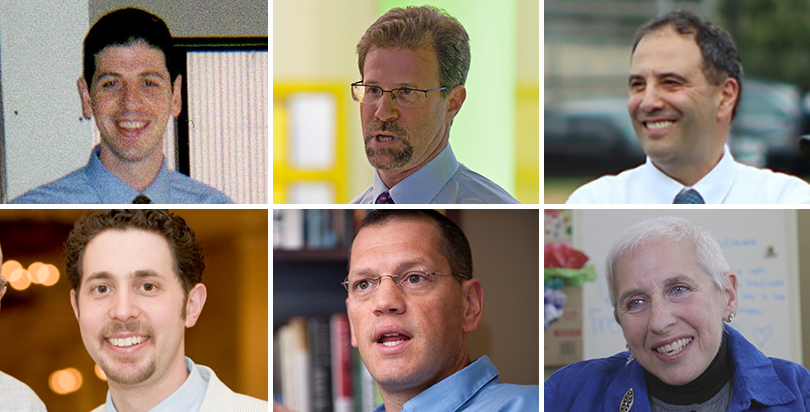Inside the 2004 Denver Summit That Changed the Course of America’s Public Charter Schools

This is an excerpt from the new Richard Whitmire book The Founders: Inside the Revolution to Invent (and Reinvent) America’s Best Charter Schools. See more excerpts at The 74; watch all the videos, download the book and explore the Founders Oral History at The74Million.org/TheFounders.
But there’s one more contribution that few would think to include on that list: sponsoring a Denver meeting of key charter leaders that oddly remains somewhat fuzzy in everyone’s memory. Everyone agrees that it was definitely held in a nondescript, boring hotel meeting room. And everyone says it was a snowy winter day. But the date? The hotel? Few participants I talked to, including Walton staffers, could recall the hotel, but Uncommon CEO Brett Peiser dug up an ancient email: It was the Warwick Hotel, and the date was April 26, 2004.
Why dwell on this ill-recalled meeting? Because it marks an important East Coast-West Coast gathering for leaders who before that meeting had lived in separate coastal worlds. Plus, it appears to be a launching pad for the model embraced by most great charters today: becoming part of a network.
This Denver summit played a big part in the development of high-performing charter networks.
Cathy Lund, the Walton senior program officer who helped pull together that Denver event, said the purpose of the meeting was to sort out why some charters succeeded while others failed: Shouldn’t funders like Walton start focusing on getting the great charters to replicate?
And so Walton invited high-performing charters from both coasts to meet in Denver and formulate a way to grow more winners. Chris Barbic from Houston-based YES Prep came, as did Norman Atkins and Brett Peiser, who ran the schools that would become Uncommon charters.
Michael Milkie from Chicago’s Noble Street charters showed up, as did Doug Lemov, Doug McCurry from Achievement First and Kim Smith from NewSchools Venture Fund. Jim Shelton from the Bill & Melinda Gates Foundation was in attendance, as was KIPP co-founder Mike Feinberg.
And the indomitable Linda Brown, the godmother of the top charter schools movement, was there as the head of the Boston-based Building Excellent Schools. Naturally. When wasn’t she at a meeting like this?

In this case, Brown was listed as a co-host, as was the then-named New York Charter School Research Center. The guest list was a who’s who of the future networks of high-performing charter schools. At the time, however, that was more of an aspiration than a reality.
Not surprisingly, the key speaker was Aspire’s Don Shalvey, who gave everyone a pep talk on this newfangled arrangement that California’s wildly pro-charter law allowed: CMOs, or charter management organizations. As Atkins recalls the meeting: “The Walton people introduced Don, who told how he created a CMO. Then they said they were encouraging people to do what he was doing and would give out planning grants for people to write a business plan that would lead to a CMO.”
All kinds of lightbulbs started going off in Atkins’s head. Soon, those lightbulbs would lead to the Uncommon group of charters. And the other top performers pushed in the same direction: learning and adopting best practices. That explains why so many of today’s top performers can be found in CMOs. And it also explains why the leaders of most successful independent startup charters soon start dreaming of their own CMO.
The dream: Replicate quality at scale.
This Warwick Hotel meeting remains important for other reasons. For perhaps the first time, there were top charter leaders from both coasts sitting around swapping lessons learned. “I think every organization makes a list of the crap they haven’t figured out yet,” said Shalvey, “like getting new facilities green-lighted, or transportation, or special education. And you were sitting around talking about that list and someone would say, ‘Oh, I worked on that,’ and then you do a bunch of sharing.”
For many of the key charter operators, this was the first time they had met one another. Brett Peiser recalls meeting Chris Barbic of YES Prep for the first time. And until that day, he had never met Shalvey. “He was incredibly entertaining,” said Peiser.
At the time, Peiser and Atkins were running separate charter schools in Boston but thinking about combining efforts. They were drawn to Denver by Walton’s offer of $50,000 planning grants to write CMO business plans (Walton’s way of encouraging the best charters to grow) to build upon the innovation pioneered by Shalvey that at this point in time remained somewhat unknown to East Coast charter operators. Peiser recalls the last-minute application he and Atkins worked on: “We worked all night to come up with a business plan for what Uncommon Schools would look like, and then ended up at an all-night Kinko’s to print it out.”
The sharing among charter founders in that Denver meeting, more than any other factor, explains the very wide gap between the top 20 percent of charter schools and the rest of the field. “What I came away with was that there was a group of people out there doing the same thing we were trying to do,” said Peiser. “There was now a group of charters that were philosophically aligned about what a school should look like: longer day, longer year, the use of data, a focus on culture … Michael Milkie was going to do it in Chicago. And Chris Barbic was going to do it in Houston. And there were these very charismatic people in California doing the same.”
This meeting wasn’t the only East Coast–West Coast charter get-together, nor was it the earliest. NewSchools Venture Fund had organized bicoastal sessions before this meeting, and charter funders such as the Broad and Gates foundations were already investing in charter management organizations. But this is the session that charter entrepreneurs seem to remember most — for its content, if not for its particulars — and these were the crucial planning grants they said launched their organizations in new directions.
Walton executives may not cite this meeting as one of their key accomplishments. But they should.

Get stories like these delivered straight to your inbox. Sign up for The 74 Newsletter

;)
